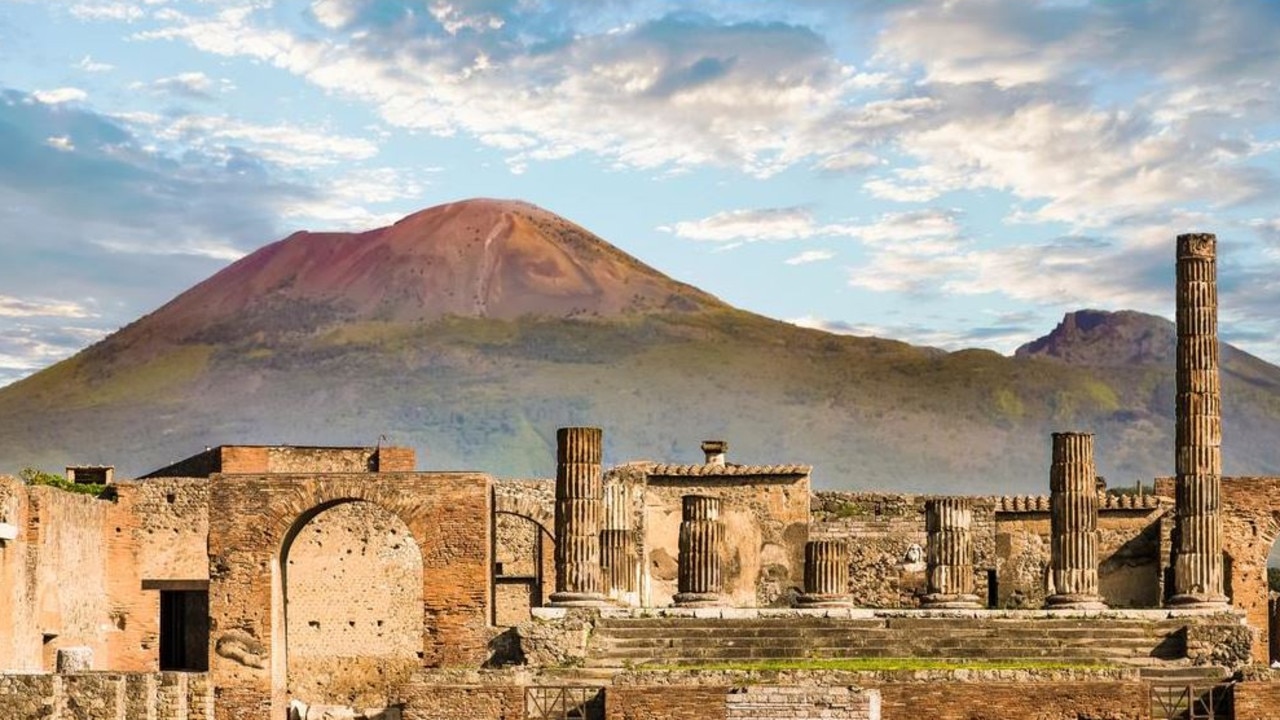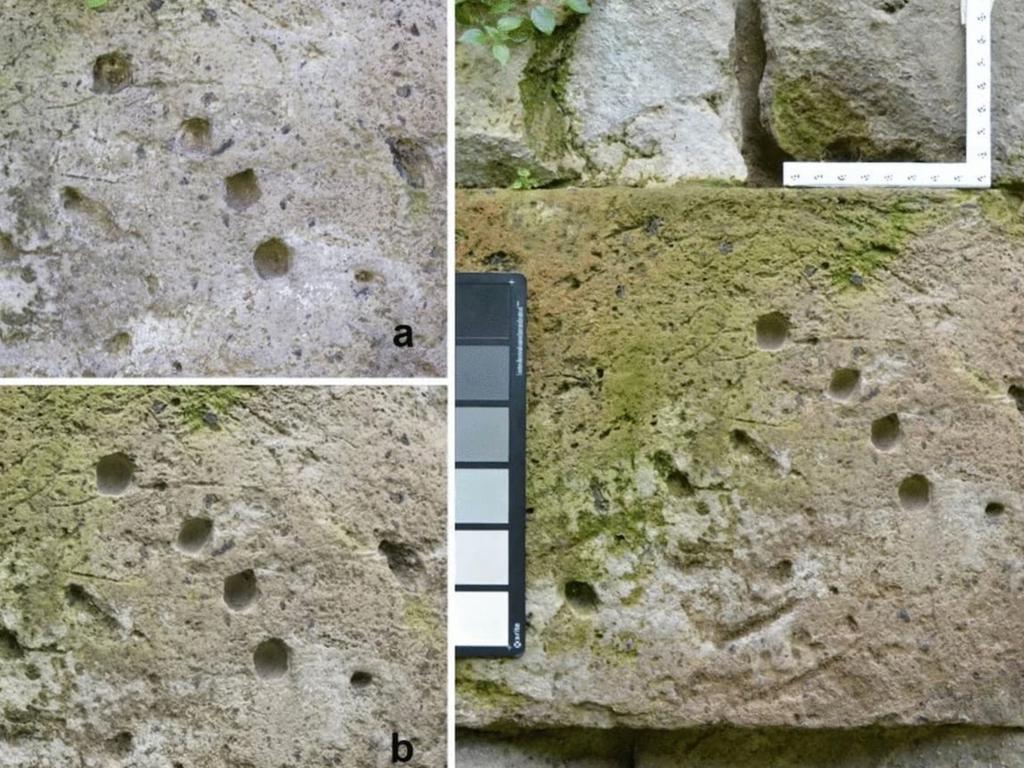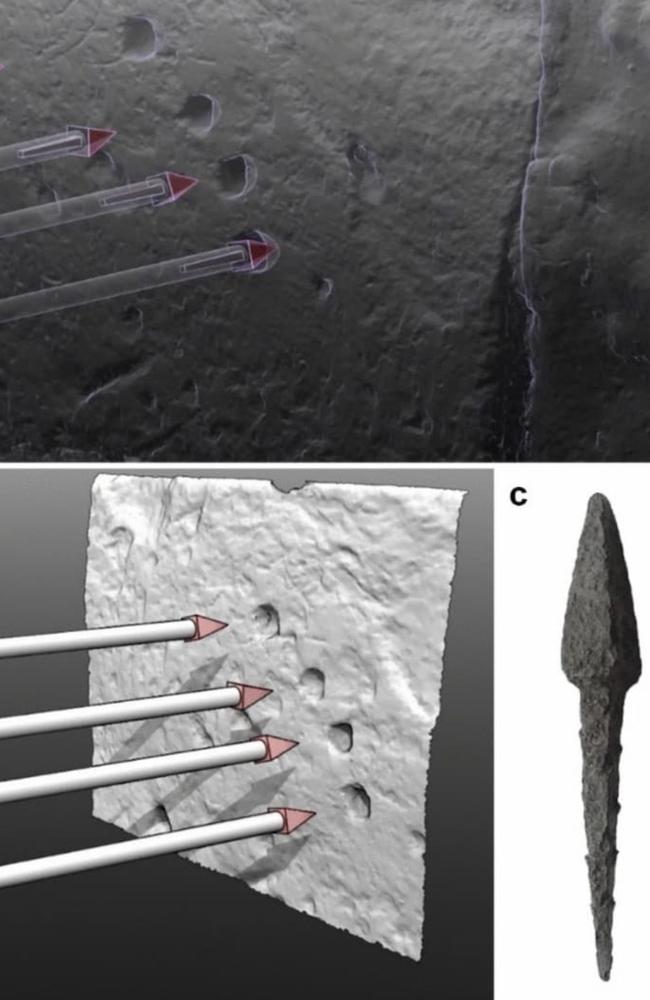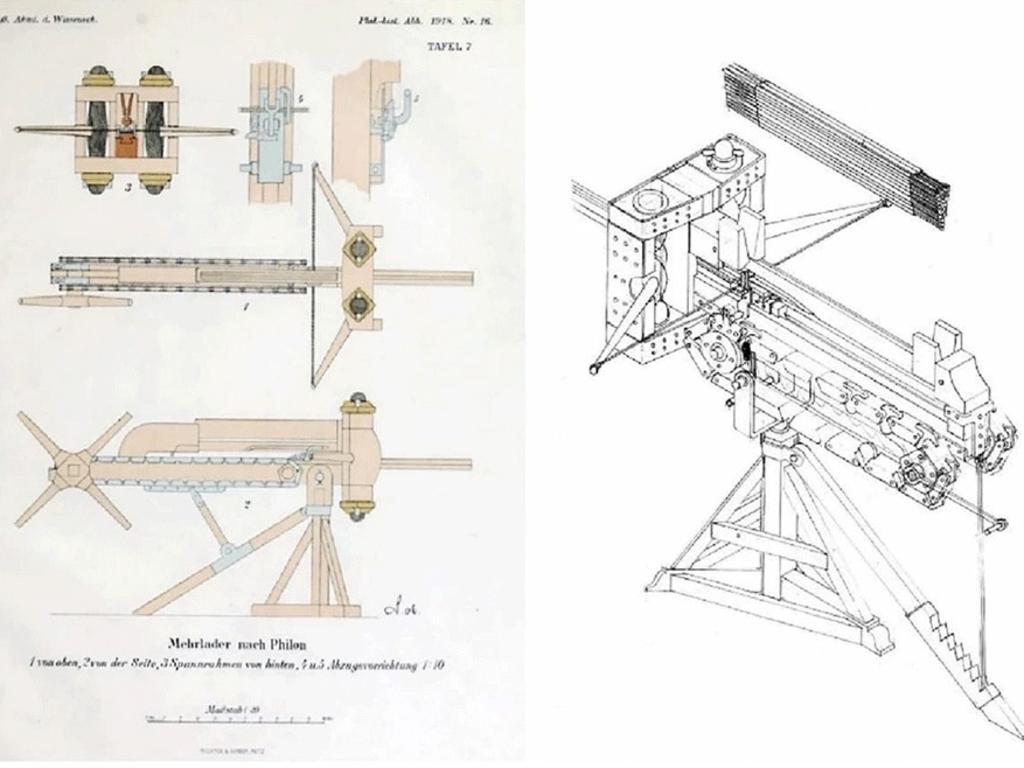Evidence of ancient weapon ‘polybolos’ found at Pompeii
Ancient Romans fought some of history’s most famous battles with a highly advanced weapon that mimicked the action of a machinegun, new research suggests after a remarkable discovery

READING LEVEL: ORANGE
A scattering of tiny holes on Pompeii’s city walls may prove a weapon mentioned in ancient writings might actually have been real.
Researchers examining the stone walls of the ancient city of Pompeii* have found what look like bullet holes near the city’s main gates for the Vesuvius and Herculaneum roads.

Except the holes can’t have been caused by bullets.
Pompeii was buried under volcanic ash as Mount Vesuvius erupted in 79AD. Gunpowder was first used in handheld weapons 900 years later in China.
So what were these tightly grouped clusters of diamond-shaped holes?
They were too small to be caused by ancient artillery*, such as heavy stones. And too deep to be caused by hand-drawn bows.
University of Campania researcher Associate Professor Adriana Rossi said the holes were unlike anything ever seen before.
Their uniqueness led researchers to wonder if they were caused by the polybolos, a “machinegun” style crossbow-like weapon invented by the Greeks during the 3rd Century BC.

SCIENTIFIC EVIDENCE
The University of Campania academics scanned the impact points in 3D and digitally reconstructed* the properties of the stone wall. Their models of the trajectories* and depths of impact suggest the heavy iron points that caused them must have been travelling at about 109m per second.
The deep grooves were in groups of four or five. And their even spacing suggests they were fired together, or very close together.
The only weapon known from ancient writings that could produce these results was the polybolos, the study suggests.

The study argues the marks in the wall were made when the iron bolts missed their targets.
The evidence fits the known history of Pompeii, which was besieged a century before being buried by volcanic ash.
The previously free city had rebelled against the growing power of Rome.

Its citizens wanted to restore their independence. But the famous Roman general, Sulla, was sent to stamp down the uprising in 89BC.
Surviving accounts tell how he attacked Pompeii’s port with “artillery”, generally thought to be catapults* and large ballistae (heavy bolt throwers).
General Sulla entered Pompeii once the walls were breached*. The surviving defenders quickly surrendered, and the city was formally made part of the Roman Republic.
Most of its residents were granted citizenship. And many of the Roman legionaries* involved in the siege were gifted properties in and around the city.
A century later, the coastal city had become a holiday resort for Rome’s rich and famous.

FROM MYTH TO REALITY
It’s not entirely certain how the ancient “machine gun” worked. No surviving example has ever been found.
But a description of its mechanics is contained in the writings of Philo of Byzantium (Philo Mechanicus). This inventor lived in the Greek city of Alexandria, the location of history’s greatest library, in about 250BC. Its university was a boiling pot of philosophy, science and engineering.
Philo embraced the emerging concept of physics. He is credited with some of the earliest examples of automation* and robotics. And his writings included treatises* on leverage* and the design of siege engines*.

The polybolos (which, in Greek, means “many-shot-thrower”) relied on torsion (the springlike power of tightly twisted cords bending timber) as its power source.
It is thought that up to 15 bolts (large arrows) were stored in a chamber above the device. These were successively fed into the crossbow-like firing mechanism by a gear-driven chain-drive – the first known example of its kind.
All the user had to do was pull a trigger, and the stored torsion power could unleash several volleys of bolts. Once used up, torsion energy could be restored by winding a windlass winch* and the chamber reloaded.
It was the most complex weapon system of its time.
POLL
GLOSSARY
- Pompeii: an ancient Roman city that was buried by the volcanic ash of nearby Mount Vesuvius in 79AD. The city was preserved by the ash and recent excavations have revealed an amazing glimpse into the art and culture of the wealthy Roman city as if frozen in time
- artillery: mechanical systems used for throwing heavy objects used as weapons, like heavy stones, bolts or large arrows
- digitally reconstructed: recreated in digital form using computer mapping
- trajectories: paths followed by flying objects
- besieged: when a place is surrounded by armed forces and made to surrender or be taken captive
- catapults: a mechanical device that can hurl stones, spears or other objects used as missiles at great distances
- breached: broke through
- Roman legionaries: Roman citizens who were part of the Roman army as foot soldiers
- automation: machines that operate automatically
- treatises: a written work that deals with a subject in a formal and systematic way
- leverage: (Philo’s work on the subject is The Mochlica), the force needed to lift and move objects
- siege engines: (Philo’s work on the subject is The Belopoeica) weapons used to break fortresses like castle walls and gates, like a battering ram
- windlass winch: used for moving heavy weights, a horizontal barrel is rotated by the turn of a crank. A winch is attached to one or both ends and a rope is wound around the winch, pulling a weight attached to the opposite end
EXTRA READING
Pompeii home reveals new clues
Kids’ drawings found in Pompeii
King Tut’s dad built ancient town
QUICK QUIZ
1. In what year was Pompeii besieged?
2. Why was the Roman general, Sulla, sent to Pompeii?
3. When was gunpowder first used in handheld weapons?
4. Which ancient civilisation invented the polybolos?
5. What is the name of the Ancient Greek inventor who wrote about leverage?
LISTEN TO THIS STORY
CLASSROOM ACTIVITIES
1. Brainstorm!
Can you think of other explanations for the holes? Brainstorm as many as you can think of.
Time: allow at least 30:minutes to complete this activity
Curriculum Links: English, History
2. Extension
What archaeological or physical evidence would be needed to prove that the holes in Pompeii were caused by the polybolos? Use information in the story and perhaps your research skills to write a list.
Time: allow at least 45 minutes to complete this activity
Curriculum Links: English, History
VCOP ACTIVITY
BAB it!
Show you have read and understood the article by writing three sentences using the connectives “because’’, “and”, and “but” (BAB). Your sentences can share different facts or opinions, or the same ones but written about in different ways.


